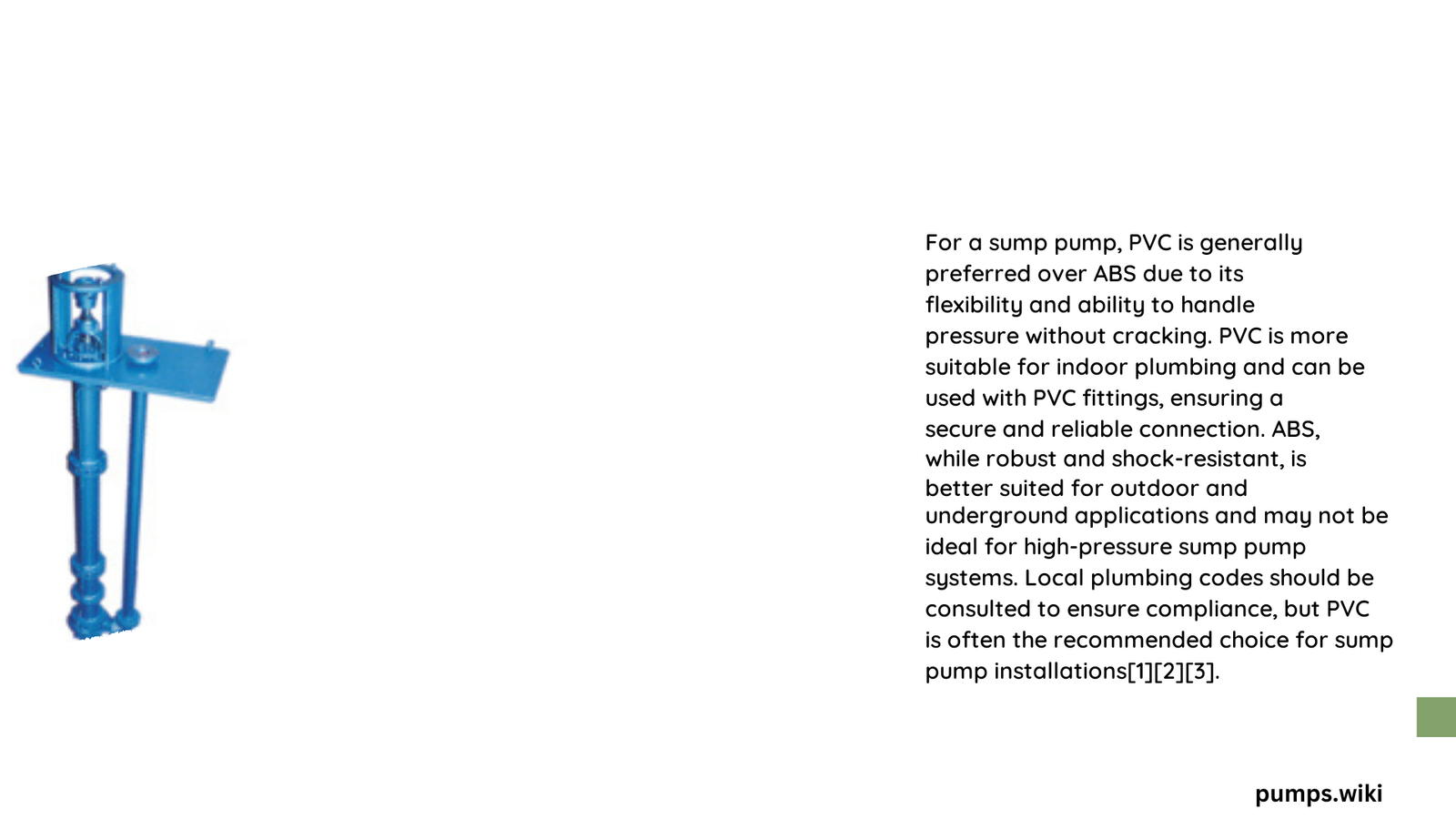Homeowners seeking reliable sump pump discharge solutions often face critical decisions about pipe materials. ABS and PVC pipes offer unique advantages for managing water drainage, providing durable, corrosion-resistant, and cost-effective options for protecting basements from potential water damage. Understanding their specifications, installation techniques, and performance characteristics is crucial for effective water management systems.
What Makes ABS and PVC Pipes Suitable for Sump Pumps?
Why Choose ABS PVC for Sump Pump Discharge?
ABS (Acrylonitrile Butadiene Styrene) and PVC (Polyvinyl Chloride) pipes have become standard choices for sump pump discharge due to their exceptional properties:
| Material | Strength | Corrosion Resistance | Temperature Tolerance | Cost |
|---|---|---|---|---|
| ABS | High | Excellent | Better cold resistance | Moderate |
| PVC | Moderate | Excellent | Limited temperature range | Low |
Key Advantages of ABS PVC for Sump Pump
- Lightweight construction
- Chemical resistance
- Easy installation
- Long-term durability
- Minimal maintenance requirements
How Do Pipe Diameters Impact Sump Pump Performance?
Selecting the correct pipe diameter is crucial for optimal sump pump efficiency. Most residential applications utilize:
- 1.25-inch inside diameter for standard discharge
- 1.5-inch inside diameter for moderate water volumes
- 2-inch inside diameter for longer discharge runs or high-volume scenarios
What Factors Determine Pipe Material Selection?
Several critical factors influence the choice between ABS and PVC for sump pump discharge:
- Temperature exposure
- Installation environment
- Pressure requirements
- Local building codes
- Budget constraints
How to Install ABS PVC for Sump Pump Discharge?

What Tools Are Required for Installation?
Essential tools for ABS PVC sump pump pipe installation include:
- Pipe cutter
- Measuring tape
- Pipe cleaner
- Specialized cement (ABS or PVC specific)
- Protective gloves
- Safety glasses
What Are the Step-by-Step Connection Techniques?
ABS Pipe Connection Process
- Clean pipe ends thoroughly
- Apply ABS cement evenly
- Connect pipes quickly before cement dries
- Hold connections steady for 30 seconds
PVC Pipe Connection Process
- Apply PVC primer
- Use PVC adhesive
- Join pipes immediately
- Maintain pressure for proper bonding
How to Maintain ABS PVC Sump Pump Pipes?
What Maintenance Strategies Ensure Longevity?
Regular maintenance prevents potential failures:
- Annual pipe inspection
- Check for potential leaks
- Verify proper alignment
- Clean discharge areas
- Monitor pipe condition
What Troubleshooting Techniques Address Common Issues?
- Inspect for hairline cracks
- Verify check valve functionality
- Ensure proper pipe slope
- Remove potential blockages
- Replace damaged sections promptly
Professional Recommendations for ABS PVC Sump Pump Selection
What Do Experts Suggest?
Professional plumbers recommend:
– Prioritize quality over cost
– Follow manufacturer guidelines
– Consider local climate conditions
– Consult local building regulations
– Invest in professional installation if uncertain
Conclusion
ABS PVC for sump pump discharge represents a sophisticated, reliable solution for residential water management. By understanding material characteristics, installation techniques, and maintenance strategies, homeowners can effectively protect their properties from potential water damage.
